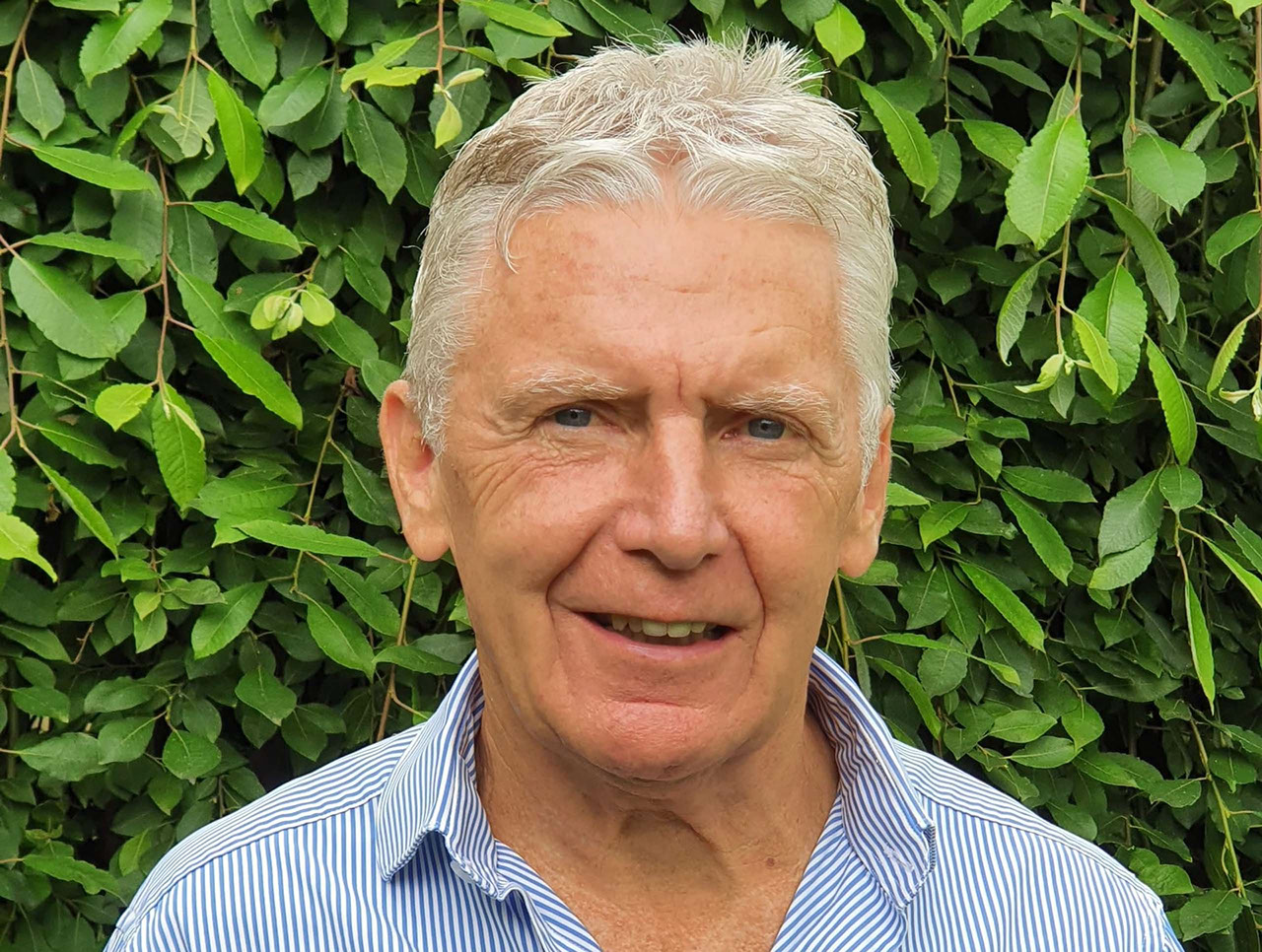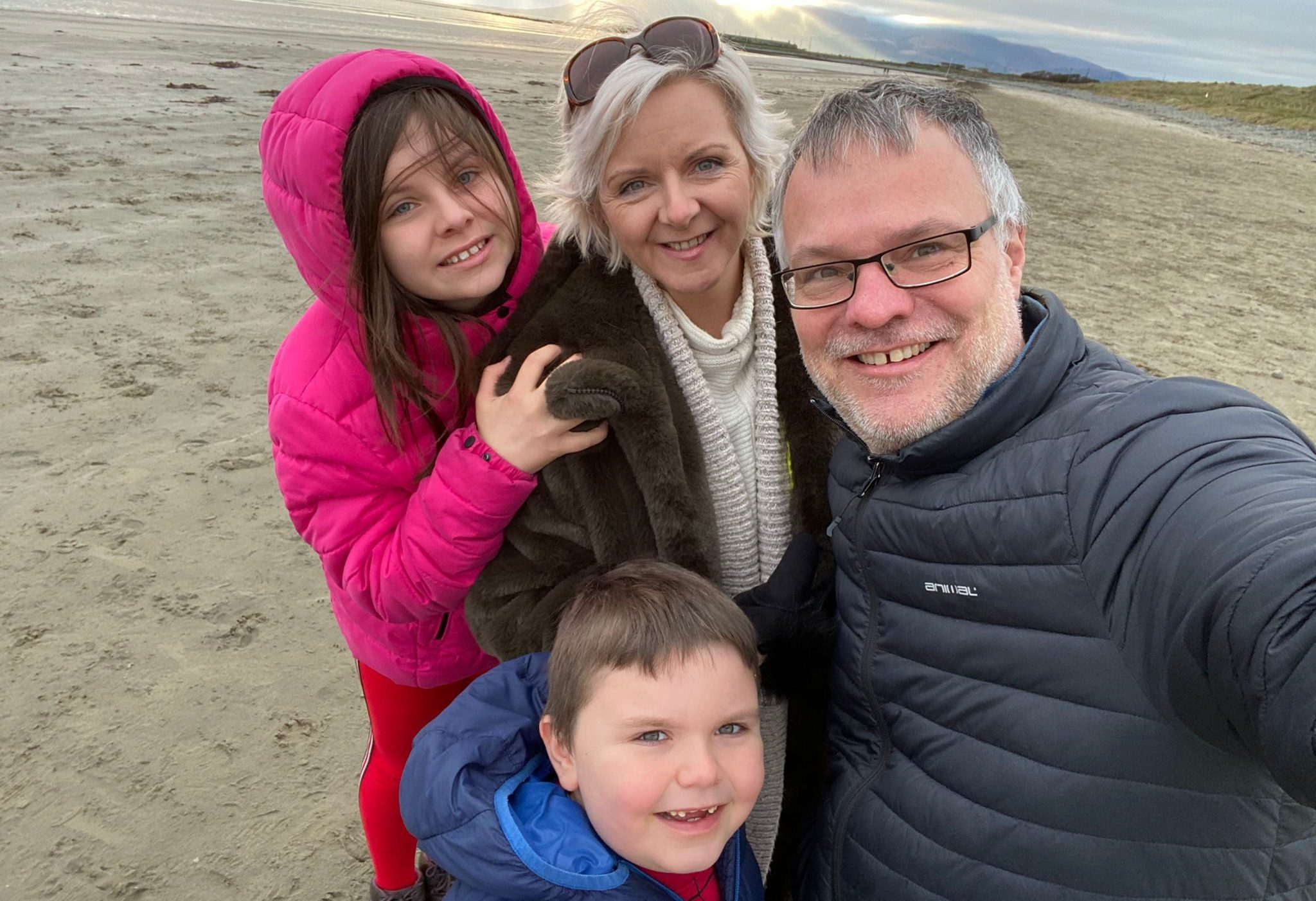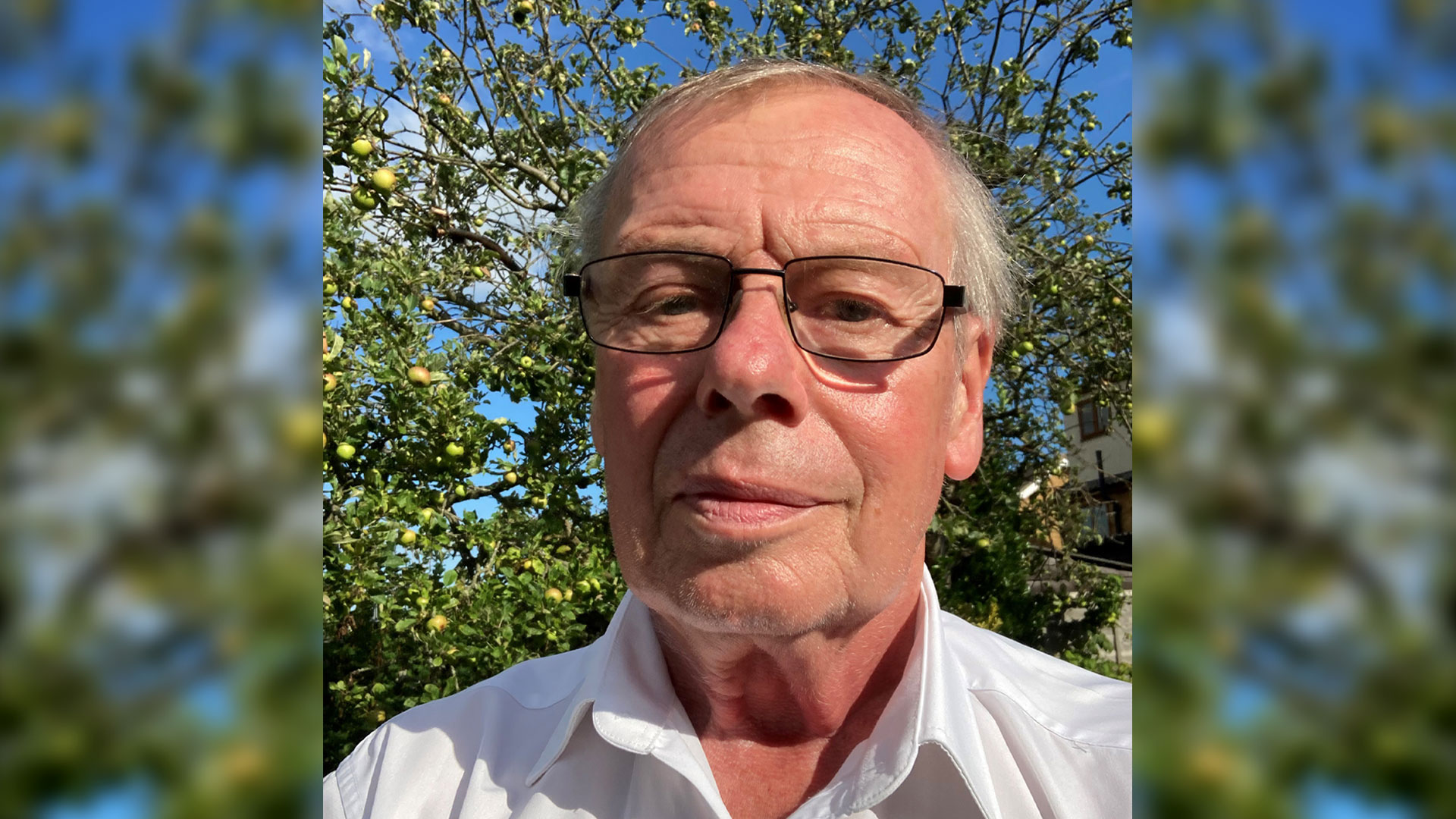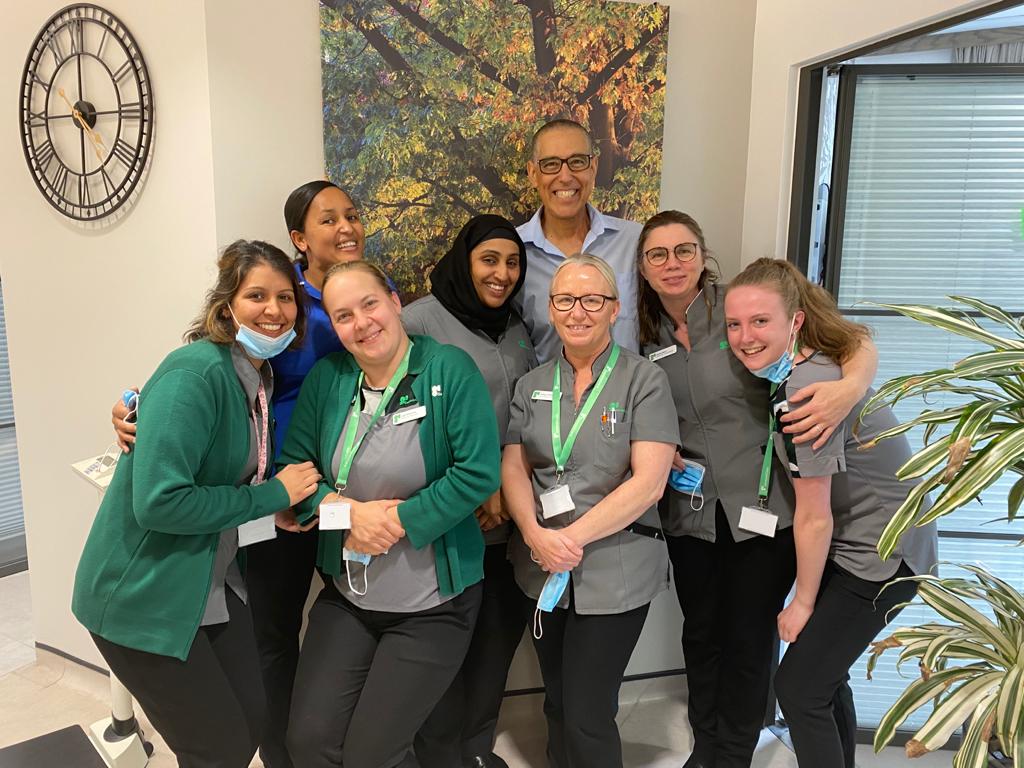- Patients
- Patient resources
- Patient stories
- Laurences story patient stories at GenesisCare

Laurence’s story – Treatment for recurrent prostate cancer on the MRIdian MR Linac
Article
Laurence, a consultant engineer, property developer and amateur architect is married with three children and five grandchildren.
In 2004 Laurence was diagnosed with prostate cancer and subsequently underwent 20 sessions of radiotherapy. Despite suffering from some side effects, the treatment proved successful until a routine PSA test in 2020 indicated things were changing and a diagnostic scan confirmed that his prostate cancer had returned.
As Laurence had already undergone external beam radiotherapy, he was not a suitable candidate for surgery and his choices were limited. He could either opt for hormone therapy long term to attempt to control the cancer or he could have a revolutionary new prostate reirradiation treatment.
Having discussed his options with his doctor, Laurence said “This was a no brainer for me. The hormone therapy is not a curative treatment and comes with a long list of side effects, that would adversely impact on my quality of life. However, the new reirradiation treatment has had no side effects and aims to irradicate the cancer.”
This revolutionary new treatment is carried out on the ground-breaking MRIdian MR linac machine at GenesisCare in Oxford providing a safe and effective treatment option for men with locally recurrent prostate cancer. The MRIdian enables clinicians to see detailed live images of the tumour and surrounding tissue providing them with greater control and confidence that they’re hitting the target 100% of the time. The MRIdian is the only model that has automated beam control, meaning that if a tumour moves even slightly, the treatment will be automatically paused until it comes back into position, to avoid healthy tissue being damaged.
The greater accuracy also allows doctors to provide an equivalent outcome to the standard 20 and 37 radiotherapy doses, but with less overall dose resulting in as few as 5 treatment sessions for patients.
Following his diagnosis, Laurence was referred to Dr Philip Camilleri, Clinical Oncologist at GenesisCare who explained how the MRIdian worked, qualified the risks and explained the likelihood of success.
Dr Camilleri said “Being able to treat recurrent prostate cancer with a repeated course of external beam radiotherapy is a new development that will provide a non-invasive alternative to prostate salvage therapy. Since starting treatment on the UKs first MRIdian MR linac in January 2020, we’ve been able to give hope to patients with previously difficult to treat tumours. Now we can look to treat even more patients and deliver a better quality of life to those with locally recurrent prostate cancer who otherwise had limited options.”
Before treatment began Laurence had a transperineal targeted prostate biopsy to confirm the exact location of the tumour and at the same time had a rectal spacer inserted. Spacers are used to protect the rectum during radiotherapy treatment by moving it away from the prostate gland to reduce the side effects of prostate radiotherapy. They are inserted during a one-off procedure and are gradually absorbed and eliminated naturally from the body through the urine.
Laurence was then ready for treatment. He had 5 appointments each one lasting between 40 minutes to an hour. Before each session he chose to take a mild sedative as he was concerned that he may feel claustrophobic whilst being treated on the machine. He was relieved to find that the treatment was completely painless, there was no downtime and he continued with all his everyday activities and was even out running during the days in between treatment sessions.
Laurence said “This new treatment is an exciting development and gives hope to me and other men looking for an effective treatment for recurrent prostate cancer. I’ve been really impressed with the facilities, treatment and staff at GenesisCare – it’s been a very positive experience”.
Commenting on the case, Dr Camilleri say’s “Laurence had no sign of cancer beyond the prostate, therefore with the disease confined to the gland alone and no significant ongoing side effects following on from his initial radiotherapy treatment meant he was suitable for treatment on the MRIdian. Also, his cancer was proven to be regrowing in the prostate on biopsies and he had no major concerns with the practicalities of treatment which included lying in the MR linac for up to an hour each visit.”
Dr Camilleri continues, “Laurence coped extremely well with the additional therapy, developing no additional effects other than mild and temporary urinary symptoms. He continued to exercise on a regular basis, during and after his treatment. It is too early to be able to take a view on the success or otherwise of his treatment, but his initial PSA levels have fallen satisfactorily at this early stage.”
If you’d like to know more about prostate cancer reirradiation and the MRIdian, click here.
Laurence, a consultant engineer, property developer and amateur architect is married with three children and five grandchildren.
In 2004 Laurence was diagnosed with prostate cancer and subsequently underwent 20 sessions of radiotherapy. Despite suffering from some side effects, the treatment proved successful until a routine PSA test in 2020 indicated things were changing and a diagnostic scan confirmed that his prostate cancer had returned.
As Laurence had already undergone external beam radiotherapy, he was not a suitable candidate for surgery and his choices were limited. He could either opt for hormone therapy long term to attempt to control the cancer or he could have a revolutionary new prostate reirradiation treatment.
Having discussed his options with his doctor, Laurence said “This was a no brainer for me. The hormone therapy is not a curative treatment and comes with a long list of side effects, that would adversely impact on my quality of life. However, the new reirradiation treatment has had no side effects and aims to irradicate the cancer.”
This revolutionary new treatment is carried out on the ground-breaking MRIdian MR linac machine at GenesisCare in Oxford providing a safe and effective treatment option for men with locally recurrent prostate cancer. The MRIdian enables clinicians to see detailed live images of the tumour and surrounding tissue providing them with greater control and confidence that they’re hitting the target 100% of the time. The MRIdian is the only model that has automated beam control, meaning that if a tumour moves even slightly, the treatment will be automatically paused until it comes back into position, to avoid healthy tissue being damaged.
The greater accuracy also allows doctors to provide an equivalent outcome to the standard 20 and 37 radiotherapy doses, but with less overall dose resulting in as few as 5 treatment sessions for patients.
Following his diagnosis, Laurence was referred to Dr Philip Camilleri, Clinical Oncologist at GenesisCare who explained how the MRIdian worked, qualified the risks and explained the likelihood of success.
Dr Camilleri said “Being able to treat recurrent prostate cancer with a repeated course of external beam radiotherapy is a new development that will provide a non-invasive alternative to prostate salvage therapy. Since starting treatment on the UKs first MRIdian MR linac in January 2020, we’ve been able to give hope to patients with previously difficult to treat tumours. Now we can look to treat even more patients and deliver a better quality of life to those with locally recurrent prostate cancer who otherwise had limited options.”
Before treatment began Laurence had a transperineal targeted prostate biopsy to confirm the exact location of the tumour and at the same time had a rectal spacer inserted. Spacers are used to protect the rectum during radiotherapy treatment by moving it away from the prostate gland to reduce the side effects of prostate radiotherapy. They are inserted during a one-off procedure and are gradually absorbed and eliminated naturally from the body through the urine.
Laurence was then ready for treatment. He had 5 appointments each one lasting between 40 minutes to an hour. Before each session he chose to take a mild sedative as he was concerned that he may feel claustrophobic whilst being treated on the machine. He was relieved to find that the treatment was completely painless, there was no downtime and he continued with all his everyday activities and was even out running during the days in between treatment sessions.
Laurence said “This new treatment is an exciting development and gives hope to me and other men looking for an effective treatment for recurrent prostate cancer. I’ve been really impressed with the facilities, treatment and staff at GenesisCare – it’s been a very positive experience”.
Commenting on the case, Dr Camilleri say’s “Laurence had no sign of cancer beyond the prostate, therefore with the disease confined to the gland alone and no significant ongoing side effects following on from his initial radiotherapy treatment meant he was suitable for treatment on the MRIdian. Also, his cancer was proven to be regrowing in the prostate on biopsies and he had no major concerns with the practicalities of treatment which included lying in the MR linac for up to an hour each visit.”
Dr Camilleri continues, “Laurence coped extremely well with the additional therapy, developing no additional effects other than mild and temporary urinary symptoms. He continued to exercise on a regular basis, during and after his treatment. It is too early to be able to take a view on the success or otherwise of his treatment, but his initial PSA levels have fallen satisfactorily at this early stage.”
If you’d like to know more about prostate cancer reirradiation and the MRIdian, click here.




